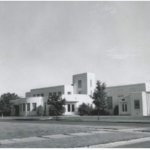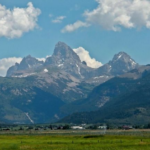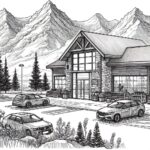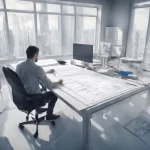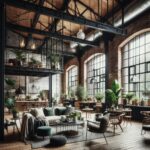Step into the world of architectural brilliance as we uncover the masterminds shaping Idaho Falls’ skyline. From innovative residential designs to striking commercial structures, Idaho Falls boasts a league of exceptional architects pushing the boundaries of creativity and functionality.
Embark on a virtual journey through the city’s architectural landscape, where each edifice tells a unique story of vision and craftsmanship. As we delve into the works of the best architects in Idaho Falls, prepare to be captivated by their ingenuity and attention to detail. Discover how these architects seamlessly blend aesthetics with practicality, redefining modern living spaces and work environments.
Join us as we shine a spotlight on the architectural marvels that grace Idaho Falls, showcasing the talents behind these iconic structures. It’s time to celebrate the individuals who transform blueprints into breathtaking realities, leaving an indelible mark on the city’s architectural heritage.
Historical significance of architecture in Idaho Falls
Idaho Falls, a city rich in history and culture, has an architectural narrative that spans over a century. The development of architecture in this region began in the late 19th century when settlers brought their visions and building techniques to the area. The establishment of the city in 1886 marked the beginning of a unique architectural evolution, heavily influenced by the natural landscape and the needs of a growing community. The architecture of Idaho Falls reflects the aspirations and challenges faced by its inhabitants, serving as a testament to the resilience and creativity of its people.
As the city expanded, various architectural styles emerged, influenced by the broader movements occurring across the United States. The early buildings were primarily functional, focusing on practicality and durability. However, as the economy grew, so did the ambition of local architects and builders, leading to the construction of more elaborate and stylistically diverse structures. Notable examples from this era include the Victorian and Romanesque Revival buildings, which showcased intricate designs and craftsmanship, thereby establishing a strong architectural foundation for future developments.
The significance of architecture in Idaho Falls extends beyond mere aesthetics; it encapsulates the city’s identity and heritage. Architectural landmarks serve as historical markers, telling stories of the past and commemorating significant events and figures within the community. The preservation of these structures has become crucial in maintaining a connection to the city’s roots while allowing for modern growth and innovation. As we explore the architectural landscape of Idaho Falls, it is essential to recognize the historical context that shapes its present-day identity, providing insight into the collective memory of its residents.
Renowned architects in Idaho Falls
Idaho Falls is home to a variety of talented architects whose contributions have significantly shaped the city’s skyline. Among them, some have gained national recognition for their innovative designs and commitment to quality. These architects not only understand the technical aspects of building but also possess a keen sense of creativity, allowing them to craft spaces that resonate with both beauty and functionality. Their work reflects a deep understanding of the local context, ensuring that each project enhances the community’s character.
One of the most celebrated architects in Idaho Falls is John D. Barlow, whose work has left an indelible mark on the city’s architectural landscape. Barlow’s designs often incorporate elements of the surrounding environment, creating harmony between the built and natural worlds. His approach emphasizes sustainability and efficiency, making his projects not only visually appealing but also environmentally responsible. Through his vision, Barlow has inspired a new generation of architects to prioritize the integration of nature into their designs.
Another notable figure is Linda Smith, known for her contemporary residential designs that blend modern aesthetics with traditional elements. Smith’s work is characterized by clean lines, open spaces, and innovative use of materials. Her ability to create functional yet stylish homes has garnered her numerous awards and accolades. By pushing the boundaries of conventional design, Smith has contributed to a vibrant architectural scene in Idaho Falls, encouraging other architects to explore new ideas and techniques while remaining true to the community’s heritage.
Notable architectural projects in Idaho Falls
Among the many architectural projects in Idaho Falls, several stand out for their innovation and impact on the community. The Idaho Falls Public Library is a prime example of modern architecture that serves both practical and cultural functions. Designed with an emphasis on accessibility and community engagement, the library features spacious reading areas, meeting rooms, and a stunning atrium that floods the interior with natural light. This project exemplifies how architecture can enhance public spaces, inviting residents to gather, learn, and connect.
Another significant project is the Museum of Idaho, a cultural landmark that showcases the region’s history and diversity. The design of the museum marries functionality with aesthetic appeal, creating an inviting atmosphere for visitors. The building itself is a work of art, with its unique facade and thoughtful landscaping that reflects the natural beauty of Idaho. This project has become a focal point for education and tourism, further solidifying Idaho Falls’ reputation as a center for culture and history.
In addition to public buildings, residential projects in Idaho Falls also deserve recognition. One such project is the Riverstone Estate, a stunning example of luxury living that harmonizes with its natural surroundings. The design incorporates large windows and outdoor living spaces, allowing residents to fully appreciate the beauty of the landscape. This home not only serves as a personal sanctuary but also showcases the potential for high-end architecture to coexist with the environment, setting a standard for future residential developments in the area.
Architectural styles prevalent in Idaho Falls
The architectural styles found in Idaho Falls are a reflection of the city’s rich history and diverse cultural influences. Over the years, various styles have emerged, each contributing to the unique character of the city. One predominant style is the Craftsman bungalow, which gained popularity in the early 20th century. This style is characterized by its low-pitched roofs, wide eaves, and extensive use of natural materials. Craftsman homes in Idaho Falls often feature intricate woodwork and built-in furniture, embodying the principles of simplicity and craftsmanship.
In contrast to the Craftsman style, the mid-century modern architecture also has a notable presence in Idaho Falls. This style, which emerged after World War II, emphasizes clean lines, open floor plans, and a strong connection to nature. Many residential and commercial buildings from this era showcase large glass windows and innovative use of space, allowing for a seamless transition between indoor and outdoor environments. The mid-century modern structures in Idaho Falls are celebrated for their minimalist aesthetic and functional design, appealing to a contemporary audience while honoring the past.
Additionally, the influence of Neoclassical architecture can be observed in several prominent buildings throughout the city. This style is characterized by its grandeur and symmetry, often featuring columns, pediments, and decorative elements inspired by ancient Greek and Roman architecture. The Idaho Falls Temple, for instance, exemplifies Neoclassical design with its majestic façade and intricate detailing. These styles, along with others, create a rich tapestry of architectural diversity in Idaho Falls, highlighting the city’s ability to embrace tradition while fostering innovation.
Influence of local culture on Idaho Falls’ architecture
The architectural landscape of Idaho Falls is deeply intertwined with the local culture, reflecting the values, traditions, and aspirations of its residents. The city’s history as a melting pot of different cultures has encouraged a blend of architectural styles that tell the story of its diverse community. From the indigenous influences to the contributions of European settlers, the architecture in Idaho Falls serves as a tangible representation of the cultural narratives that have shaped the region.
The local culture’s emphasis on community and connection is evident in the design of public spaces throughout the city. Parks, community centers, and gathering places are thoughtfully designed to foster interaction and engagement among residents. For instance, the design of the River Walk along the Snake River promotes a sense of community by providing a scenic route for walking, cycling, and socializing. The architecture of these spaces encourages outdoor activities and community events, reinforcing the city’s commitment to creating a vibrant and inclusive environment.
Furthermore, Idaho Falls’ architecture often reflects the region’s agricultural roots and connection to nature. Many buildings incorporate natural materials and sustainable design principles, showcasing a respect for the environment that resonates with the local population. This connection to the land is also evident in the integration of landscaping and outdoor spaces within architectural designs. By celebrating the region’s natural beauty, architects in Idaho Falls create structures that not only serve functional purposes but also honor the cultural significance of the environment.
Sustainability and innovation in Idaho Falls’ architectural designs
In recent years, sustainability has become a guiding principle in the architectural practices of Idaho Falls. Architects are increasingly embracing eco-friendly design strategies that minimize environmental impact while maximizing the functionality and comfort of their buildings. This shift toward sustainable architecture is not only a response to global environmental challenges but also a reflection of the values held by the local community, which prioritizes conservation and stewardship of the natural landscape.
Innovative building techniques and materials have emerged as key components in the sustainable design movement. Many architects in Idaho Falls are incorporating energy-efficient systems, such as solar panels and geothermal heating, into their projects. These technologies not only reduce energy consumption but also lower utility costs for residents and businesses. Additionally, the use of recycled and locally sourced materials in construction practices minimizes the carbon footprint of new buildings while supporting the local economy.
The commitment to sustainability in Idaho Falls is also evident in the design of public spaces and infrastructure. Urban planners and architects are collaborating to create green spaces that promote biodiversity and improve air quality. The integration of parks, green roofs, and permeable surfaces into the urban landscape encourages ecological balance and enhances the quality of life for residents. By prioritizing sustainability and innovation, Idaho Falls is establishing itself as a leader in environmentally responsible architecture, setting a precedent for future developments in the region.
Exploring architectural landmarks in Idaho Falls
Idaho Falls is home to a wealth of architectural landmarks that showcase the city’s rich history and diverse architectural styles. One of the most iconic structures is the Idaho Falls LDS Temple, which stands proudly on a hill overlooking the city. This Neoclassical masterpiece features stunning white marble and intricate detailing, making it a focal point for both residents and visitors. The temple’s beautifully landscaped grounds add to its grandeur, providing a serene environment for reflection and worship.
Another landmark worth exploring is the historic Bonneville County Courthouse, a stunning example of Romanesque Revival architecture. Completed in 1896, the courthouse boasts intricate stone carvings, a prominent clock tower, and beautiful stained glass windows. This building not only serves as a functional government structure but also as a symbol of Idaho Falls’ commitment to preserving its historical heritage. Guided tours of the courthouse offer insight into the architectural features and the significance of the building within the community.
The Idaho Falls Historic District, encompassing several blocks of well-preserved buildings, is a treasure trove of architectural delights. Walking through this district allows one to appreciate the unique blend of styles, from Victorian to Arts and Crafts. Each building tells a story, reflecting the evolving needs and tastes of the community over time. The district’s preservation efforts ensure that these architectural gems remain a vital part of Idaho Falls’ identity, inviting residents and tourists alike to explore the city’s rich history through its structures.
Architectural photography tips for capturing Idaho Falls’ structures
Capturing the architectural beauty of Idaho Falls requires a thoughtful approach to photography that highlights the unique features of each structure. One essential tip for photographers is to consider the time of day when shooting. The golden hours of early morning and late afternoon provide soft, diffused lighting that can enhance the textures and colors of buildings. This natural light can create striking contrasts, making architectural details stand out beautifully in photographs.
Another important aspect is the choice of angles and perspectives. Experimenting with different angles can yield creative and dynamic compositions. Low angles can emphasize the height and grandeur of a building, while capturing the structure from a distance can showcase its relationship with the surrounding landscape. Incorporating foreground elements, such as trees or people, can add depth to the images, creating a more engaging composition that tells a story about the space.
Finally, post-processing plays a crucial role in enhancing architectural photography. Adjusting contrast, brightness, and color balance can help achieve the desired mood and bring out the best in each photograph. However, it’s essential to maintain authenticity; the goal is to showcase the architecture as it is while highlighting its unique characteristics. By following these tips, photographers can effectively capture the architectural marvels of Idaho Falls, preserving their beauty for future generations to appreciate.
Conclusion: Celebrating the architectural legacy of Idaho Falls
The architectural landscape of Idaho Falls is a testament to the creativity, resilience, and cultural richness of its community. From historical landmarks to contemporary designs, each structure contributes to the city’s unique identity, reflecting the evolution of its built environment over time. As we have explored, the architects shaping Idaho Falls are not only skilled craftsmen but also visionaries who understand the importance of blending aesthetics with functionality, sustainability, and community engagement.
As the city continues to grow and evolve, the legacy of its architecture remains firmly rooted in the past while embracing the future. The commitment to preserving historical structures alongside innovative new developments speaks to the community’s dedication to honoring its heritage while adapting to modern needs. Idaho Falls stands as a shining example of how architecture can serve as both a reflection of cultural values and a catalyst for positive change.
As we celebrate the architectural marvels that grace Idaho Falls, let us also recognize the individuals and communities that have played a role in shaping this vibrant city. Their stories, aspirations, and craftsmanship are woven into the very fabric of Idaho Falls, making it a place where architecture and culture coexist harmoniously. Through continued appreciation and exploration of its architectural legacy, we ensure that the beauty and significance of Idaho Falls will endure for generations to come.
Image source: First Presbyterian Church (Idaho Falls, Idaho)
